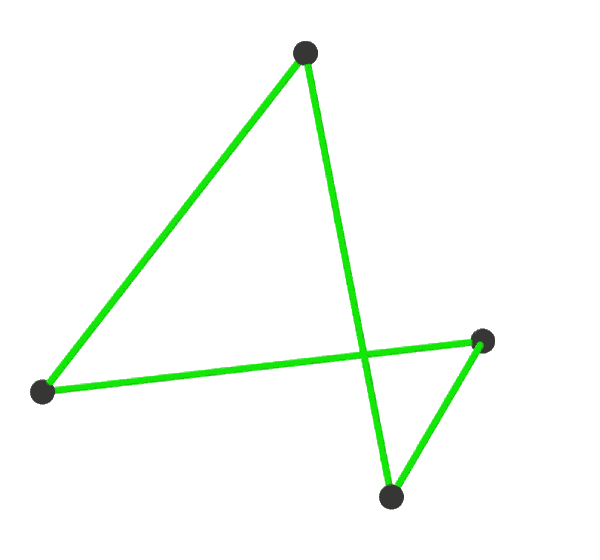|
Petrial
In topological graph theory, the Petrie dual of an embedded graph (on a 2-manifold with all faces disks) is another embedded graph that has the Petrie polygons of the first embedding as its faces. The Petrie dual is also called the Petrial, and the Petrie dual of an embedded graph G may be denoted G^\pi. It can be obtained from a signed rotation system or ribbon graph representation of the embedding by twisting every edge of the embedding. Properties Like the usual dual graph, repeating the Petrie dual operation twice returns to the original surface embedding. Unlike the usual dual graph (which is an embedding of a generally different graph in the same surface) the Petrie dual is an embedding of the same graph in a generally different surface. Surface duality and Petrie duality are two of the six Wilson operations, and together generate the group of these operations. Regular polyhedra Applying the Petrie dual to a regular polyhedron produces a regular map. The number of skew ... [...More Info...] [...Related Items...] OR: [Wikipedia] [Google] [Baidu] |
Petrial Tetrahedron
A regular polyhedron is a polyhedron whose symmetry group acts transitively on its flags. A regular polyhedron is highly symmetrical, being all of edge-transitive, vertex-transitive and face-transitive. In classical contexts, many different equivalent definitions are used; a common one is that the faces are congruent regular polygons which are assembled in the same way around each vertex. A regular polyhedron is identified by its Schläfli symbol of the form , where ''n'' is the number of sides of each face and ''m'' the number of faces meeting at each vertex. There are 5 finite convex regular polyhedra (the Platonic solids), and four regular star polyhedra (the Kepler–Poinsot polyhedra), making nine regular polyhedra in all. In addition, there are five regular compounds of the regular polyhedra. The regular polyhedra There are five convex regular polyhedra, known as the Platonic solids; four regular star polyhedra, the Kepler–Poinsot polyhedra; and five regular compou ... [...More Info...] [...Related Items...] OR: [Wikipedia] [Google] [Baidu] |
